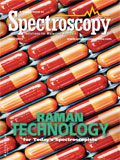Out of This World: The Next Generation of Medical Diagnosis
Real-time air fingerprinting (RAFT) uses spectroscopic techniques to measure volatile organic compounds. Now, the University of Leicester in the UK is testing the use of RAFT for rapid and noninvasive diagnosis of illness in an emergency ward. Paul Monks, a professor in atmospheric chemistry and earth observation science, explains the approach.
The University of Leicester (Leicester, UK) has achieved a world first by establishing a Star Trek–style "sick bay" in a busy hospital accident and emergency ward. Part of the demonstration unit uses spectroscopy techniques for real-time air fingerprinting (RAFT) to perform rapid and noninvasive diagnosis of illness. Spectroscopy interviewed Paul Monks, Professor in Atmospheric Chemistry and Earth Observation Science — one of the key forces behind the project — to find out more.
How did you enter the field of analyzing volatile organic compounds (VOCs) in breath?
Monks: Bizarrely, for someone who studies VOCs in breath, the answer is atmospheric chemistry. My main research interests are air quality and climate. I had a number of questions based around the rapid detection of wide ranges of VOCs in the atmosphere, and so my collaborator and I built an instrument to measure them. Having done this, we realized there were many other applications for the instrument, from food to forensics and medical.
What are the key features of the real-time air fingerprinting (RAFT) project?
Monks: RAFT is making a difference to big and small companies. The RAFT business tenet was regional-based technology innovation from the higher education sector that could be used to develop business opportunities for regional businesses based on the fast analysis of complex mixtures of gases. RAFT has been sniffing out success for a range of companies in the waste recycling, food, healthcare, and construction businesses sectors. We have worked with small and medium enterprises (SMEs) to gather preliminary data so they can leverage investment. We have developed new processes for instant detection of the ripeness of high-value fruit products. We have helped companies look at waste mitigation options for by-products of their commercial waste. From the demonstrator facility we have had a base to engage not only SMEs but larger companies who have commercial interest in the technology and expertise available in RAFT.
What do you look for in breath samples when looking for disease-related changes in the metabolome?
Monks: Breath is a mixture of nitrogen, oxygen, carbon dioxide, water vapor, inert gases, and a small fraction of trace VOCs in the parts-per-million (by volume) to parts-per-trillion range. Despite these low concentrations, trace species reflect many processes occurring in the body. Endogenous (internally produced) VOCs can be produced anywhere in the body as the products of normal metabolism. Those compounds whose concentration and nature have been altered because of disease are transported via the bloodstream to the lungs where they are exhaled in breath. The exhaled profile will represent VOCs originating from the blood; VOCs contributed from the airways, nose, or mouth; and VOCs from exogenous sources, such as inspired air.
The analysis of trace gases in breath could offer a new metabolomic approach toward disease detection. There are medical, scientific, and technical challenges in breath analysis: The biochemical generation, origin, and distribution of the VOC biomarkers need to be understood, the exhalation kinetics and sampling remain critical, and there are significant technical challenges in the move from discovery technology to bedside tests in a clinical environment. With the development of real-time analysis of breath and the ability to measure multiple components simultaneously, we are now in some senses able to fingerprint breath using a multiple marker approach. The move from the "silver bullet" single-marker approach to the interpretation of the VOC fingerprints could provide unheralded insights into human well-being and a new era from breath analysis with real time VOC measurement technology forging the way forward.
What are the challenges associated with "fingerprinting" breath?
Monks: Breath is a challenging analyte in that it is transitory, moist, and contains trace levels (parts per billion to trillion) of the target VOCs. A lot of work has gone into the breath sampling side to get reproducible sampling that can be used across a range of patients. At the moment, our main challenge is recruiting enough patients to take part in our trials.
This interview was edited for length and clarity.
For the full interview with Professor Monks, please visit: www.spectroscopyonline.com/Monks

New Study Reveals Insights into Phenol’s Behavior in Ice
April 16th 2025A new study published in Spectrochimica Acta Part A by Dominik Heger and colleagues at Masaryk University reveals that phenol's photophysical properties change significantly when frozen, potentially enabling its breakdown by sunlight in icy environments.